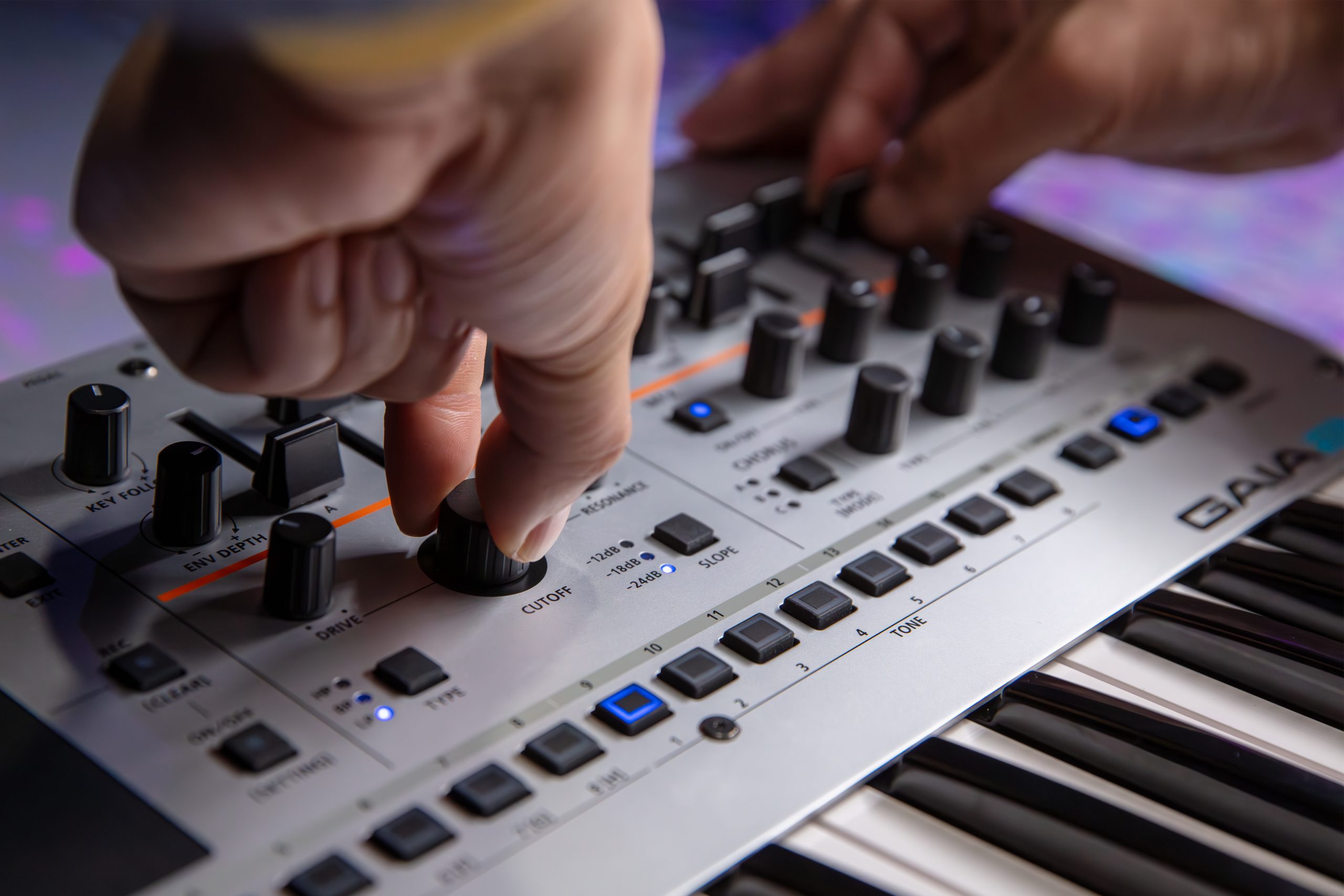GAIA 2 is a synthesizer boasting a powerful hybrid engine that combines wavetable and virtual analog synthesis. This innovative instrument gives users an expressive pathway to complex sounds and phrases full of dynamic movement. While the synthesis concept is entirely new, the name has a legacy, with the GAIA SH-01 serving as a gateway for many future synth players. In keeping with the hybrid approach of GAIA 2, Akihiro Nagata and Peter Brown from the Synthesizer Development department shed light on this dynamic addition to the Roland family.
Origins of GAIA
Tell us about the origins of the GAIA concept and what inspired Roland to bring the name back for GAIA 2.
Akihiro Nagata: GAIA is a Roland synthesizer brand with a design focus on easy-to-understand operation and sound design. It’s useful for both beginners looking to learn and professionals who want easy control over essential sound design elements. The GAIA SH-01 came out in 2010 and sold continuously for over 13 years, supported by a wide range of professionals and amateurs around the world.
The GAIA 2 is a successor to the GAIA SH-01 and intuitively emphasizes modulated sounds often used in today’s music scene. For instance, sounds typically created more easily on computers due to complicated modulation routing can be created simply by manipulating the physical knobs and sliders. The user can learn how each parameter affects the sound this way. This approach makes GAIA 2 ideal as a starter synthesizer for those who want a more modern sound with deeper control.
Peter Brown: The original GAIA was designed as a starter synthesizer to educate and inspire users with easy sound design—like a “my first synthesizer” approach. Roland has always been good at that type of thing.
Nowadays, the journeys musicians and prospective producers take are entirely different. Tens of thousands of plug-ins and YouTube videos do a good job of educating the basics of sound design and synthesizers. Therefore, the decision to use hardware is more experiential than educational. Today, a musician’s first synthesizer can offer a fun and engaging sound design experience only available in hardware.
"The original GAIA was designed as a starter synthesizer to educate and inspire users with easy sound design."
Peter Brown
The name evokes images of the Earth. Is that relevant to its organic style of sound creation?
AN: The name GAIA, derived from the Greek goddess of Earth, implies a universal approach to sound and music. We want any sound designer, beginner or professional, to create any sound they desire using GAIA.
PB: Compared to other Roland synthesizers, the new GAIA sound engine is very organic and experimental, so I can see the relationship between it and the name. The modulation options especially give a lot of potential to create evolving and animated tones, like modular synthesizers.
"The name GAIA, derived from the Greek goddess of Earth, implies a universal approach to sound and music."
Akihiro Nagata
A Unique Legacy
What aspects of the original GAIA SH-01 were unique at the time?
AN: GAIA SH-01 had many appealing specifications, such as fat VA sounds, polyphony, software-friendly USB connection, lightweight but professionally tactile, etc. However, the most attractive aspects were the UI sound blocks separated by colored lines and the panel’s organization of knobs and sliders. Customers could recognize the current sound condition clearly and perform exact operations far more easily than on other synthesizers. That’s why musicians have continued to love GAIA SH-01 for over a decade.
PB: It feels funny to say, but the D-Beam was something truly unique compared to other synthesizers. Along with its simple, color-coded interface, it had the right balance of approachability to get beginners designing sounds in no time.

Were there functions users enjoyed about the instrument that engineers took note of in the creative process for GAIA 2?
AN: While there are hints of GAIA SH-01 on the panel, we started GAIA 2 development from a blank sheet of paper. We aimed to create a brand-new synthesizer focused on creating modern musical sounds. The trend of synthesizer tones has evolved, especially in electronic music. We needed to adjust every specification to generate such sounds according to the customer’s demand.
PB: There are plenty of subtle nods to the original GAIA, like the signal flow-oriented design and virtual analog section.
"While there are hints of GAIA SH-01 on the panel, we started GAIA 2 development from a blank sheet of paper."
Akihiro Nagata
Sound Creator
A sound creator is the type of person who spends hours diving into synth sounds, exploring parameters and sounds. How does GAIA 2 help the sound creator experience?
AN: Yes, the current sound creation process is a deep dive looking around a vast number of synth parameters. By contrast, an analog synthesizer interface offers a relatively simple experience but is limited by a lack of sound elements. We aimed for easy manipulation like an analog synthesizer and to expand modulation options while retaining simplicity.
PB: The GAIA 2 combines virtual analog and wavetable synthesis, new filter types, and a massive effect section. There are also plenty of tricks, like Unison Detune and panning, which can make your tones sound wide and lush. But mostly, the ease of creating and assigning modulation makes GAIA 2 shine.
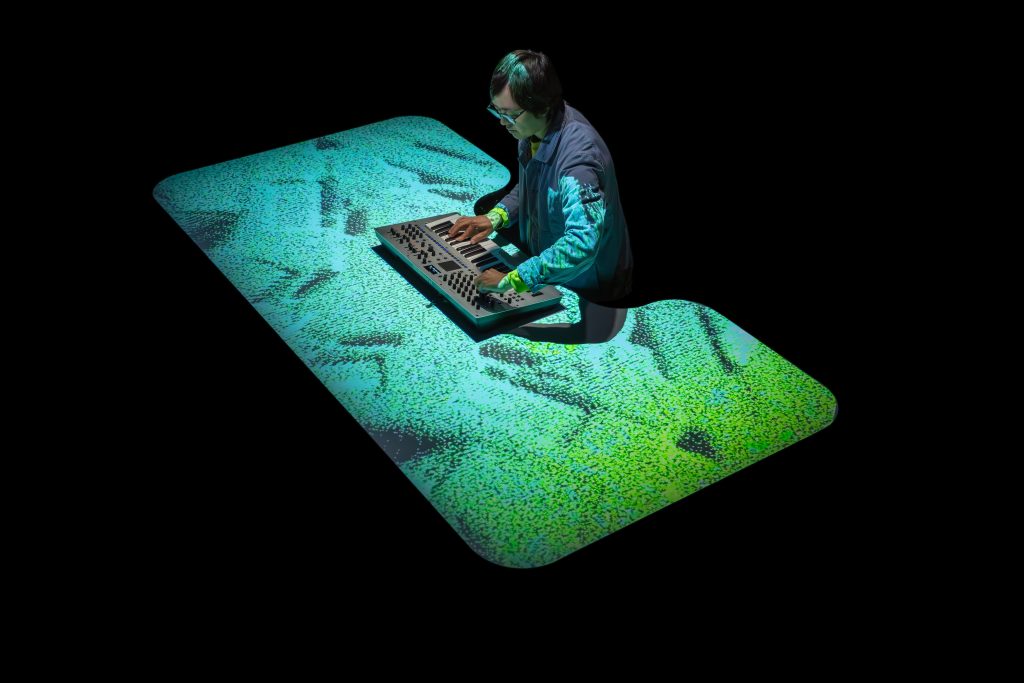
What about the new GAIA 2 workflow is designed to support sound creators?
AN: We adopted a direct parameter assign system for LFO and Motional Pad. That type of operation is often seen in software synthesizers but rarely in hardware synthesizers. We want to encourage creators to create complex modulation sounds without the stress of parameter diving in the menu window.
PB: We developed a system that lets users assign modulation sources in real time by simply holding a button and moving a control. Most controls on the panel can be assigned so the user can avoid the menu and focus on the creative experience. This makes testing and experimenting with modulation assignments a breeze.
The Motional Pad can be recorded and controlled in various ways, so you can essentially build your own envelope or LFO. I like to think of it as recordable automation attached to the sound itself.
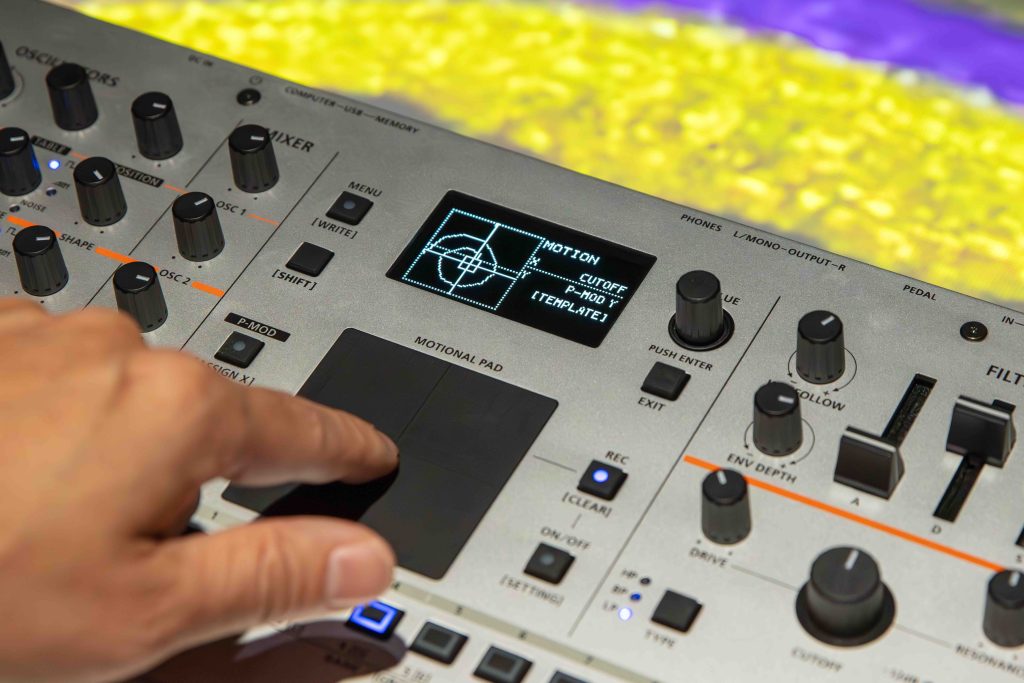
"The Motional Pad can be recorded and controlled in various ways, so you can essentially build your own envelope or LFO."
Peter Brown
Hybrid Synthesis
How does the combination of wavetable and virtual analog synthesis create a new method of sound creation?
AN: It’s one of the best collaborations between synthesis methods. Both have excellent synthesis behavior and tactility but different sound aspects. Wavetable can generate complex harmonics and morph them easily. On the contrary, VA can generate fat fundamentals and create modulation by calculation. As a result, they complement each other to develop imaginative sounds. We believe GAIA 2 owners will enjoy that exploration.
PB: These two methods provide a nice blend of classic and futuristic sound design. Wavetable is powerful but often suffers from a lack of low-end. The virtual analog engine can reinforce the sound by acting as a sub-oscillator or thickening the sound. The two then blend nicely using the mixer section and newly designed filter.
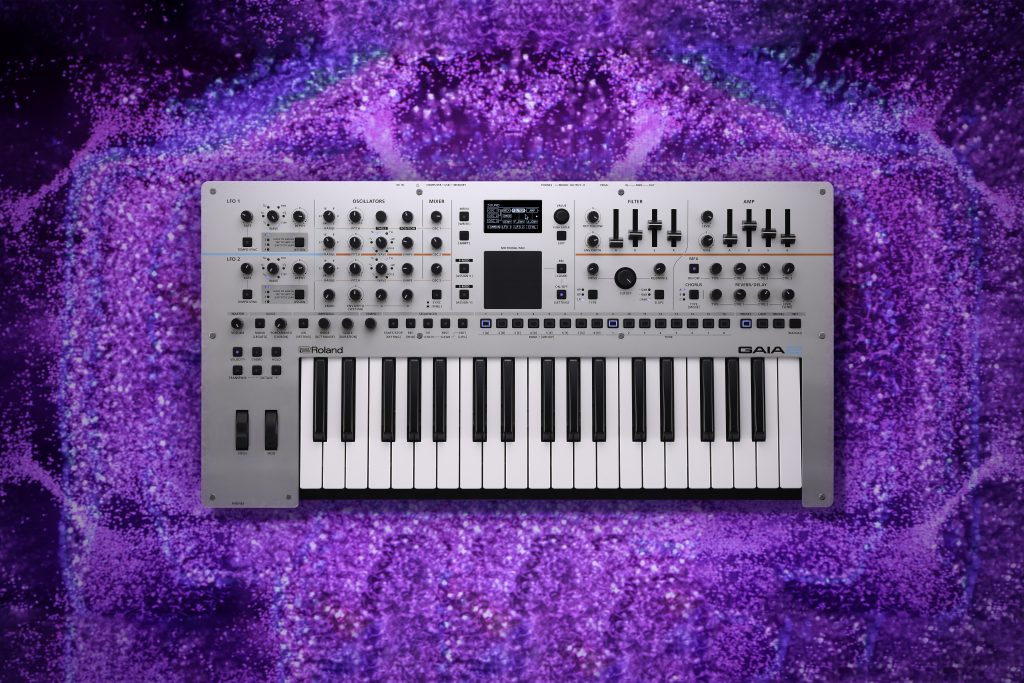
Three-dimensional Sound
GAIA 2 offers a new way of looking at sound design—a three-dimensional shaping. What kinds of music creation scenarios will benefit from this instrument?
AN: The music creation process depends entirely on the person, but we recommend tweaking GAIA 2 sounds to develop new ideas. During the sound design process, we hope many musical ideas get formed.
PB: This synthesizer allows users to explore sound through hands-on, physical interactions combined with easy-to-assign modulation. The Motional Pad can have its axis assigned just like the LFOs, and the player can record their gesture as a loop or a one-shot. This adds a human element to the sound design experience and a degree of unpredictability.
"The GAIA team included many legendary engineers who previously worked on amazing products. We had to make sure every new idea was well thought out."
Peter Brown
Today and Tomorrow
New concepts can require new techniques. What were some of the development challenges when creating GAIA 2?
AN: There were a lot of challenges in GAIA 2. These included the hybrid sound engine, direct assignable LFO, and new effects like shimmer reverb. But one notable challenge was the Motional Pad design. Besides software functionality, we took a lot of time designing the mechanical structure and adjusting its physical sensitivity for playability. If you trace its seamless surface reaching out from the aluminum panel, you’ll see we removed gaps around the pad so users can play and record modulation sounds comfortably.
PB: Anything new requires a lot of due diligence and consideration. For example, the Motional Pad and its capabilities took weeks to plan and get right. We thoroughly scrutinized everything from the polarity of the axis to the methods of recording and playback. It was a pleasure to have these discussions with some of the legendary engineers who worked on incredible products in the past.
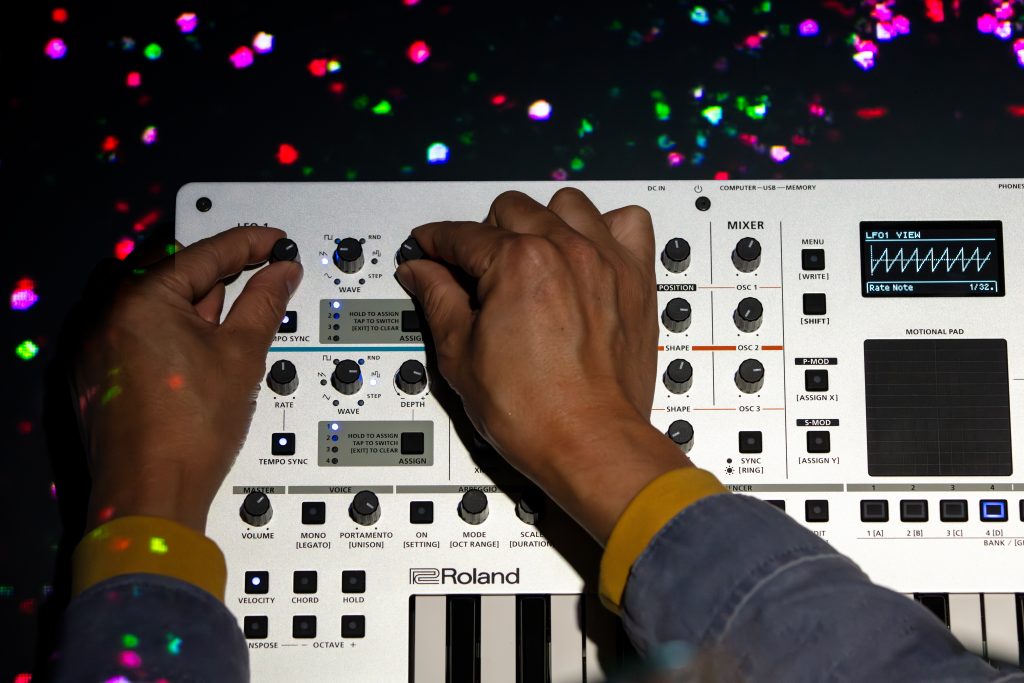
Unique Features
GAIA 2 has many new features that differentiate the instrument from other Roland synths. Tell us how the Drive knob in the multimode filter section is unique.
AN: We implemented the filter drive in SH-4d, then converted it to GAIA 2 with some adjustments. It offers rich harmonics like an analog compressor equipped with a vacuum tube. One musician commented that the Drive setting with Makeup Sens can simulate analog filters from famous synthesizers. We hope users discover their own favorite filter settings.
PB: The Drive knob provides a unique saturation, which helps change the timbre. While it can certainly provide distortion, it’s also useful for unique color and timbre changes. And it’s highly reactive to the types of sounds you’re putting into it.
"The Drive knob provides a unique saturation, which helps change the timbre. While it can certainly provide distortion, it's also useful for unique color and timbre changes."
Peter Brown
How does the Motion Design functionality contribute to the power of GAIA 2?
AN: Motion sound is a strong reason people are fascinated by synthesizer sounds. That focus is crucial in making GAIA 2 different from other synthesizers. We placed the Motional Pad at the center to inspire customer attention for motion creation. GAIA 2 lets users draw a parameter motion like a sketchbook.
PB: It adds a human element to the sound design. There are multiple parameters to control the Motion data, such as playback speed and looping. You can create your own LFOs, envelopes, and long-playing automation and assign it almost anywhere on the panel.
The GAIA 2 sequencer records panel movements alongside note information. How did the engineering team come up with this idea?
AN: The recording function of knobs/sliders came from AIRA products like TR-8S. Needless to say, it’s essential to create exciting sequencer patterns, especially for single-timbre synthesizers like GAIA 2.
PB: I have always loved the SYSTEM-8 sequencer. When we were designing GAIA 2, I wanted to incorporate elements of it, including its parameter automation. In addition to parameter automation, a sequence generator can conform to different keys and scales. I highly recommend experimenting with both of those features.
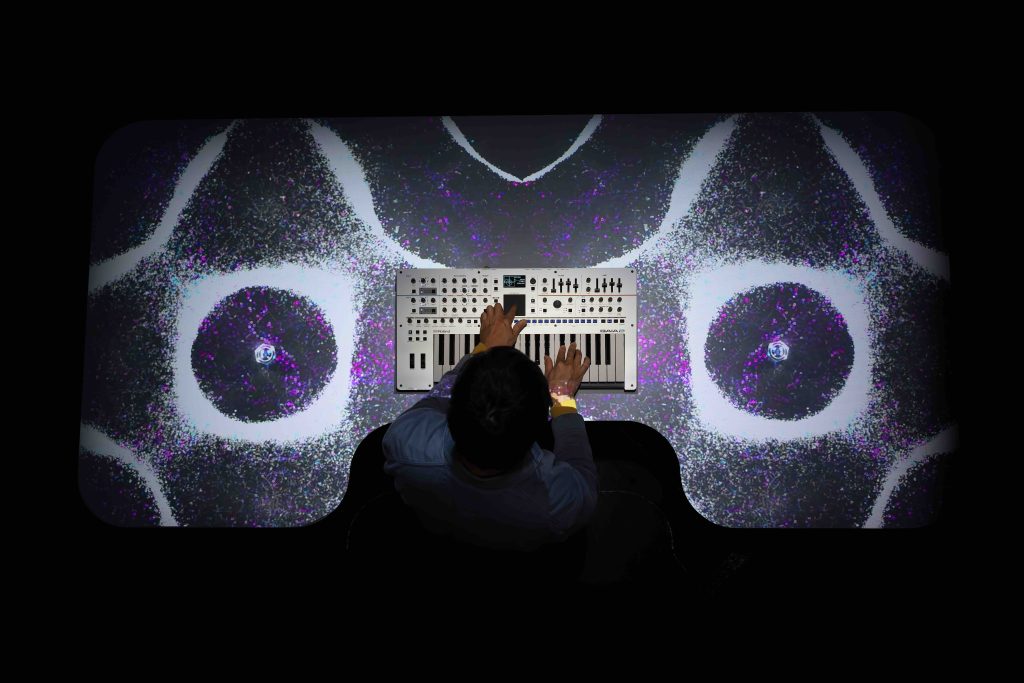
Embracing Hardware
Seeing how beloved the original GAIA SH-01 has become, how do you hope people will embrace GAIA 2?
AN: We hope people regard GAIA 2 as a must-have synthesizer for learning sound composition. We will provide instructions on how to create sounds using GAIA 2. Also, we hope professional musicians utilize GAIA 2 as a primary performance instrument like GAIA SH-01.
PB: My hope is that GAIA 2 lets music makers escape their computer screens and helps them discover how fun it is to make sounds using hardware.
